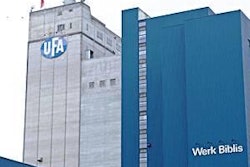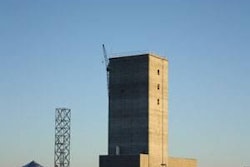Just a few years ago, online education was changing how colleges teach students. Now the movement is maturing into a model better described as distance learning, and it’s coming—soon—to your feed mill.
Chad Muse credits distance learning for helping him get his current position as assistant feed mill manager for an integrated feed mill in Delaware. He started as a delivery truck driver and worked his way into a maintenance position, but he assumed his lack of higher education would keep him out of management. So when his manager asked him if he would like to enroll in North Carolina State University’s online feed management course, he said yes.
“This was my opportunity to go to school,” Muse said.
Not just for the young
Muse had been out of school for 20 years when he enrolled at North Carolina State University, which made him a fairly typical distance learner. A survey done by the Instructional Technology Council in 2011 found online enrollment is split between recent high school graduates (48 percent) and students older than 25 years of age (47 percent).
The survey also found that while older students might not be as comfortable using technology as their younger counterparts, they are often more motivated and have higher course completion rates. That was true for Muse. Navigating the computer to complete the course wasn’t that difficult; however, balancing his coursework with the demands of a job and a family was.
“Working online is not the easy way to go,” he said. “You have to be disciplined. You have to dedicate a lot of time to it and make a lot of sacrifices.”
Now that he is in management, Muse plans to send other employees through the North Carolina State University program or similar courses. Gaining an understanding of how the whole mill operates helps everyone do their job better, he has discovered.
Currently, new employees get trained to their specific job but often don’t understand how what they do impacts the final product or the repercussions of a mistake they’ve made. They know how to perform a maintenance task but not how that task improves quality control or the cost of downtime if the task isn’t done correctly. “Good employees that take pride in their work will be an asset to you,” Muse said.
Time advantages
Being at work, rather than on campus, provided Muse with advantages beyond a steady paycheck. “I could study at night and then come to work the next day and put what I learned into practice,” he explained. Or when introduced to equipment he wasn’t familiar with, he could find the equipment in the mill and study it more closely.
That connection between book learning and hands-on is what makes distance education a good option for many feed mill training programs.
Adam Fahrenholz of North Carolina State University envisions offering training programs that require two or three days of classroom instruction delivered through a computer followed by several days of intensive, hands-on work with the real equipment. Fahrenholz has experience teaching online courses as a professor in North Carolina State University’s feed science and management program.
Cost savings
“You can talk for a while about processing methods, but sooner or later you have to get your hands dirty,” he said. Completing the lecture portion of the training beforehand gives participants more time to interact with fellow attendees and presenters at the location. Plus it reduces the amount of time employees are gone from the workplace for training. That’s critical when the need for knowledge is increasing at the same time as travel costs.
“We see a lot of changes in the amount of things people need to know. It takes a lot of time to learn all those things, but it’s not efficient to send people to conferences and workshops,” Fahrenholz said. “We can make distance education specific and tailor it to industry needs."
Training courses being developed
Although online feed management courses are still aimed primarily at university students who are on campus, more training courses are being developed. “Here at North Carolina State we are in the process of thinking about how to add on to some of our courses,” Fahrenholz said.
A few years ago, when enrollment in distance learning was increasing by 20 percent annually, universities struggled to meet the exploding demand. Now that enrollment has fallen to the more modest growth rate of 8 to 9 percent, universities have the opportunity to more carefully evaluate both course offerings and the quality of those offerings. In contrast, enrollment in traditional college courses is increasing at less than one percent annually. The feed industry is in position to benefit from those upgrades.
More than webinars
Agriculture has already embraced the concept of webinars. The Chicago Mercantile Exchange, for example, often hosts webinars featuring analysts discussing what an upcoming USDA report may mean to grain or livestock markets. Updates on topics ranging from drought status to new regulations have lent themselves well to webinars. Webinars are a good introduction to distance learning, Fahrenholz said. “It gets people used to the idea of going to a computer and being educated.”
But distance learning as envisioned by Fahrenholz and others who are starting to develop distance learning intended specifically for the feed industry is much more involved than visiting a website and entering a participant code. Voice-over presentations, based on a PowerPoint slide show with an unseen person talking, are the most common lecture form today. Sometimes the script is provided via closed captioning to make the presentation more accessible for the hearing impaired. New computer-aided tools also allow professors to create animations that can then be used to illustrate examples of both bad and good dialog between a feed mill operator and an inspector.
“Yes, you could also create a live-action video but we’ve all seen this as safety videos, and everyone is asleep after five minutes,” Fahrenholz said. “If you sit down to a one-hour lecture and it goes by quickly, we have solved half the problem of distance learning.”
Virtual feed mill
North Carolina State University is also working with Auburn University to train inspectors by creating a virtual feed mill. When completed, the virtual mill will allow trainees to begin to see a mill before they ever have a chance to set foot in one. They will be able to lift virtual lids and peer into virtual equipment so that when they finally get into a live mill, trainers can spend more time explaining why equipment works than what the equipment is.
One advantage to being a relative latecomer to distance education is that the feed industry and its partners can learn from the early efforts. “We’re really just getting started,” Fahrenholz said. “There’s no reason to start with the simple tools when all of these new tools have been developed. Let’s start with the new tools and build a really good product.”
High-speed Internet is not critical
Because much of distance education courses are pre-recorded, having high-speed internet with lots of bandwidth is not as critical as when trying to watch a live presentation. It may take a little longer to download a lecture in areas with slower internet service, but that is still more accessible than driving to an airport, flying to the course and missing work.
For many employees, distance learning can bridge that gap between what they need to know and restrictions that keep them getting that information. Muse has already experienced that first hand, and he is looking forward to having more distance education opportunities available in the future.
“If you have one employee taking one class at a time, that employee is training all the others while he’s doing the coursework,” Muse said. “Distance learning absolutely benefits the whole company.”

















